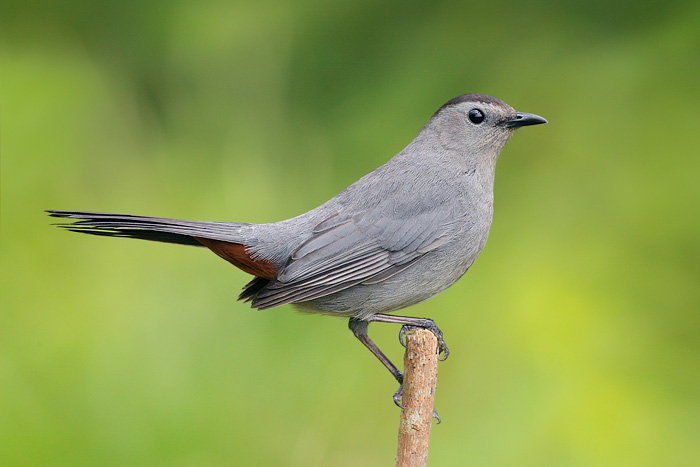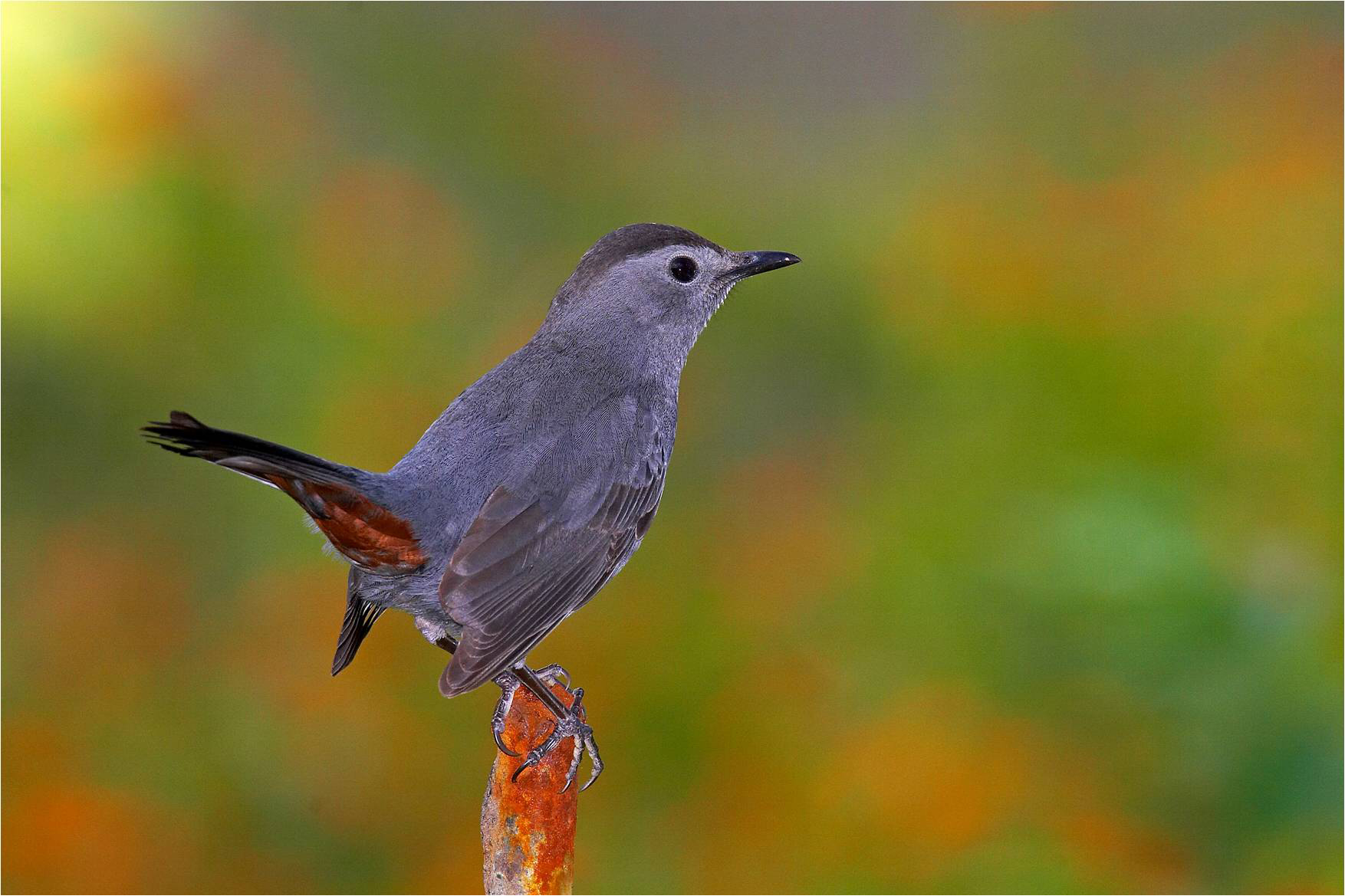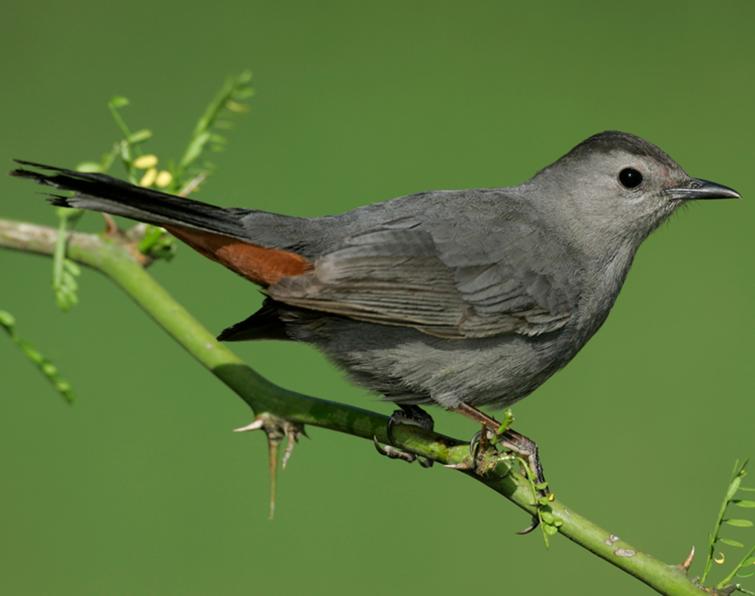
Dumetella carolinensis
TAXONOMY
Muscicapa carolinensis Linnaeus, 1766, the Carolinas.
OTHER COMMON NAMES
English: (Bermuda) blackbird; French: Moqueur chat; German:
Katzendrossel; Spanish: Sinsonte Maullador.
PHYSICAL CHARACTERISTICS
8.1–8.5 in (20.5–21.5 cm); 0.94–2.0 oz (26.6–56.5 g). Plumage
generally dark leaden-gray, crown dull black, crissum deep
chestnut-brown. Eye deep brown, bill and legs black.
DISTRIBUTION
Breeds across eastern North America from Nova Scotia to east
Texas, west to British Columbia, north New Mexico; Bermuda.
Winters from southern New England through southeast states
including Florida, coastal Texas, east Mexico through Central
America to Panama, Bahamas, Cuba, Jamaica, rarely in Lesser
Antilles. Vagrant Colombia, western Europe.
HABITAT
Scrubland, forest edge, well-vegetated suburban areas, abandoned
orchards.
BEHAVIOR
Usually in lower levels of vegetation. Rather retiring; frequently
sings from dense cover. Song is a pleasant series of
whistled and gurgled notes, interspersed with harsher notes.
Female sometimes sings. Calls include a cat-like mewing and
more grating notes.
FEEDING ECOLOGY AND DIET
Food is varied, including many invertebrates (ants, caterpillars,
spiders, grasshoppers) and some vegetable matter, including
wild grapes, especially in fall; takes eggs of other small passerine
species up to the size of American robin.
REPRODUCTIVE BIOLOGY
Nest is a cup-shaped construction of fine grasses etc, lined
with horsehair and fine materials, built mostly by female, from
ground level to 48 ft (15 m), usually about 4–5 ft (1.5 m) up.
Eggs three to four, sometimes one to six, bright blue-green.
Incubation by female alone, 12–14 days. Young fed by both
parents, fledging period 8–12 days. Double-brooded over most
of range, triple-brooded in southern areas.
CONSERVATION STATUS
Not threatened. Common over much of its range; has probably
benefited from clearance of forest and subsequent abandonment
of marginal farmland.
SIGNIFICANCE TO HUMANS
No economic significance; a popular and widespread species.
Photo Gallery of - Gray catbird




 Animalia Life
Animalia Life